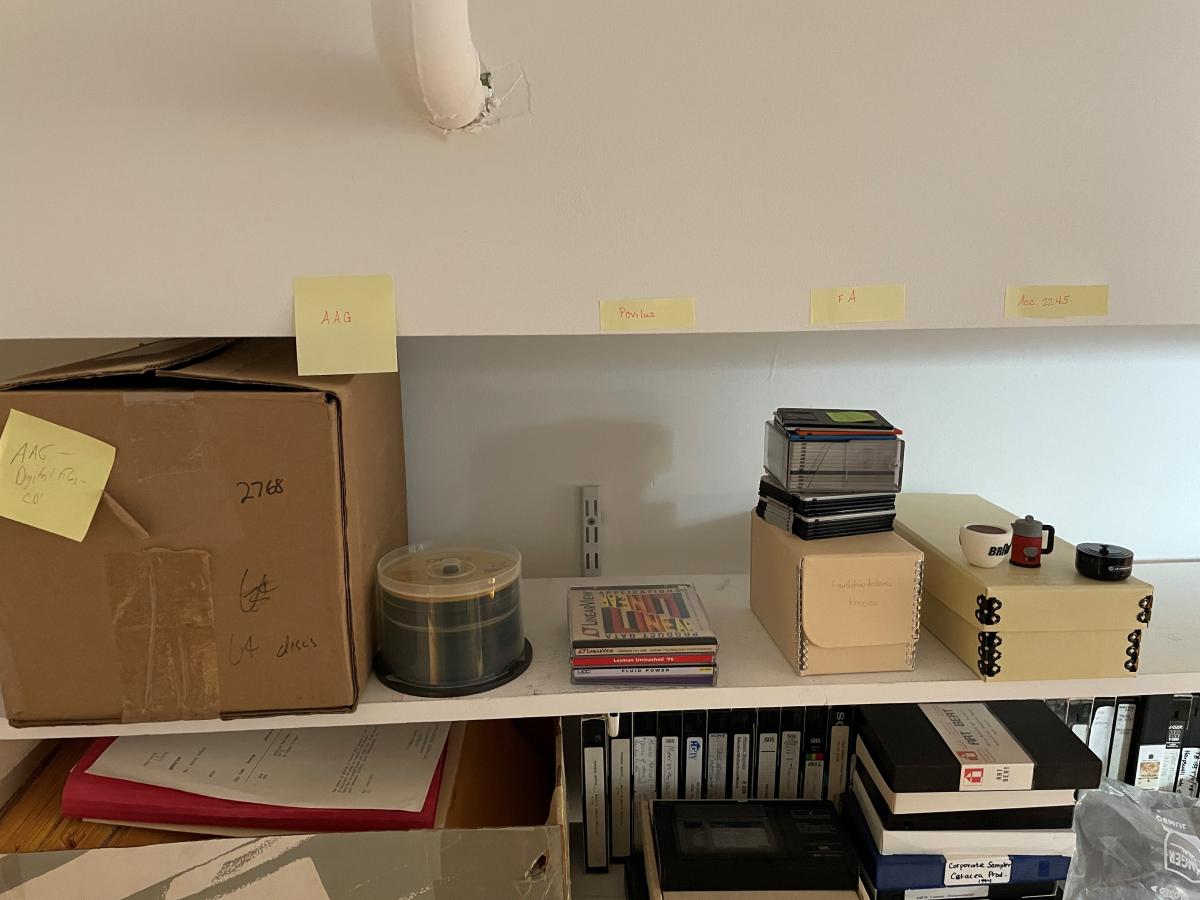In a previous article, I wrote about working with born digital materials in terms of the workflow for handling the records. Today, I want to talk a little bit more about how the process works when the digital media is from other collections.
As the Processing and Digital Archivist, I must balance working on a collection assigned to me with born digital material found by archivists in other collections. When digital material is in the collection I am working on, I can easily decide where the material fits intellectually within a collection because I am familiar with it. For example, should I come across ten CDs with high-resolution photographs from the Fall 2000 catalog, they would be organized with the other catalog folders. But say I am handed a stack of CDs from a collection someone else is working on. I do not know what organizational schema they are using, so then what?

On one hand, the organizational schema another archivist imposes on a collection does not impact my ability to pull the files and information and create access copies. But having at least a vague idea of where the files will fit in can be helpful. An example of this is a collection that is currently in process: the American Artist Group (AAG). There are approximately 300 CDs in this collection. A large part of both the CDs and the physical material are artist files – correspondence, samples, etc. As I have been working through the CDs, when creating access copies, I created a folder called “artist files” and put all files relating to specific artists in there. Any non-artist files are maintained as their own folder on the same level as “artist files” folder. The archivist processing the collection must then decide how and where these folders fit in the larger collection.
In other instances, particularly those that fall within published collections, there is less of a collection-wide organization but challenges on how to catalog the items. There is already a standard for cataloging digital media or media that comes in books; however, that is only to describe the media itself. It does not include how to describe the files contained therein or a clear indication on where to put a unique identifier to link the catalog record with the contents from it. As of writing this, we are still working out a system that will work for us.

To help make the process a little easier, with each collection I create a spreadsheet with the folder name, date, media identification number, and physical description which includes number and types of files. This provides the archivist with a lot of the information they will need when creating a folder listing for the finding aid or a MARC catalog record. However, it is still their responsibility to figure out how and where the materials fit in and make any changes to the organization of the digital files. This is all work that goes on behind the scenes that a researcher will never see but is important to the end product that is delivered.
Ashley Williams Clawson is the Processing and Digital Archivist at Hagley Museum and Library.
